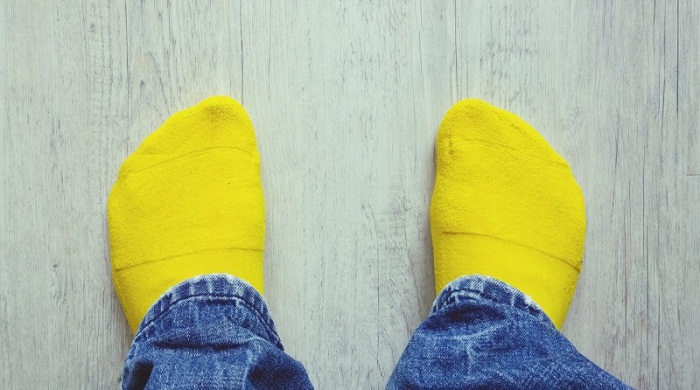Wearable microbial power plants generate electricity from urine

In lab experiments, the system produced enough electricity to power a wireless transmitter to send out the message “World’s First Wearable MFC” every two minutes.
Generating energy from urine is not new. Ieropoulos’s lab has previously powered a mobile phone, a paper-based transmitter and a 3D printed robotic heart using MFCs and liquid donations. However, an electrical pump was required to continually feed the microbes, which limits the benefits of using urine as fuel in the first place.
These socks were made for…
Aiming to make a self-sufficient, wearable device that works anywhere without additional power, the team created a manual foot pump inspired by how fish use involuntary muscles to circulate blood around their bodies.
Instead of muscle, the pump uses flexible silicone tubes, which wrap under the heels and connect to bendy MFCs near the ankles. Each step taken squeezes and releases the tubes to pump the urine around.
“There is a boom in wearable electronics, and the ability to make biological fuel cells that are flexible and wearable takes the application to the next level,” says Heather Luckarift, a researcher at Universal Technology Corporation, Ohio, who develops biotechnologies for the US Air Force. “However, it’s not clear how you would get the urine directly into this system – how do you pee into your socks?”
Indeed, in practice this sounds tricky, but Ieropoulos says it’s already suited to certain situations. “We envisage gear or clothing that already has or could have excretion incorporated, without people having to worry about collecting or handling their urine.
For example, military, space, ski or even outdoor clothing, he says. “With a bit of imagination, it is not difficult to see how this could be part of smart textiles for more general use.”
One idea includes transmitting a person’s coordinates following a disaster, such as an air accident or avalanche, while proving they are still alive since the device requires their urine and movement. “The pump aspect may also find wide application for circulating all manner of fluids; be it fuels, medical treatments, and water,” says Luckarift.















































